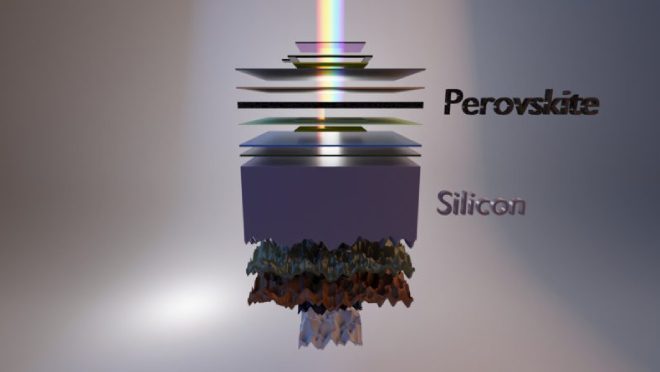German scientists have set a new world record for the conversion efficiency of tandem solar cells, and have developed perovskite and silicon solar cells with an efficiency of more than 32%. Over the years, Perovskite and silicon solar energy have always been strong partners.
Once more, HZB holds the global record for tandem solar cells, which combine a silicon bottom cell with a perovskite top cell. 32.5% of the incident solar radiation is converted into electrical energy by the innovative tandem solar cell. The record is reestablished at HZB with the new certified value of 32.5%.

“We are very excited about the new value as it shows that the perovskite/silicon tandem technology is highly promising for contributing to a sustainable energy supply,” says Prof. Steve Albrecht, HySPRINT Innovation lab teams have worked together.
The tandem cell was measured by the Italian certification body European Solar Test Installation (ESTI), which formally validated the value and included it in the National Renewable Energy Lab’s (NREL) list of solar cell technologies.
Currently, silicon crystal is the most used material for solar cells due to its efficiency, longevity, and cost amortization. In terms of power-generating effectiveness, silicon crystals can work with other battery technologies in addition to ongoing research on new materials.
Innovative solar material is perovskite. Within ten years, its conversion efficiency went from 4% to more than 24%. The materials are even better since silicon is more focused on red and infrared light whereas perovskite compounds are better at absorbing blue light.
HZB’s scientific director, Prof. Bernd Rech, emphasizes: “At 32.5 percent, the solar cell efficiency of the HZB tandems is now in ranges previously only achieved by expensive III/V semiconductors. The NREL graph clearly shows how spectacular the last two increases from EPFL and HZB really are.”
The perovskite layer can be a filter. Different light wavelengths reduce electrical loss, and to increase conversion efficiency, the team also creates a novel contact between the active layer and the electrode.
The results of this research have also been recognized by the European Union’s solar test and installation laboratory and the US National Renewable Energy Laboratory. %, which is a record that can only be achieved by expensive III-V semiconductor solar energy.




